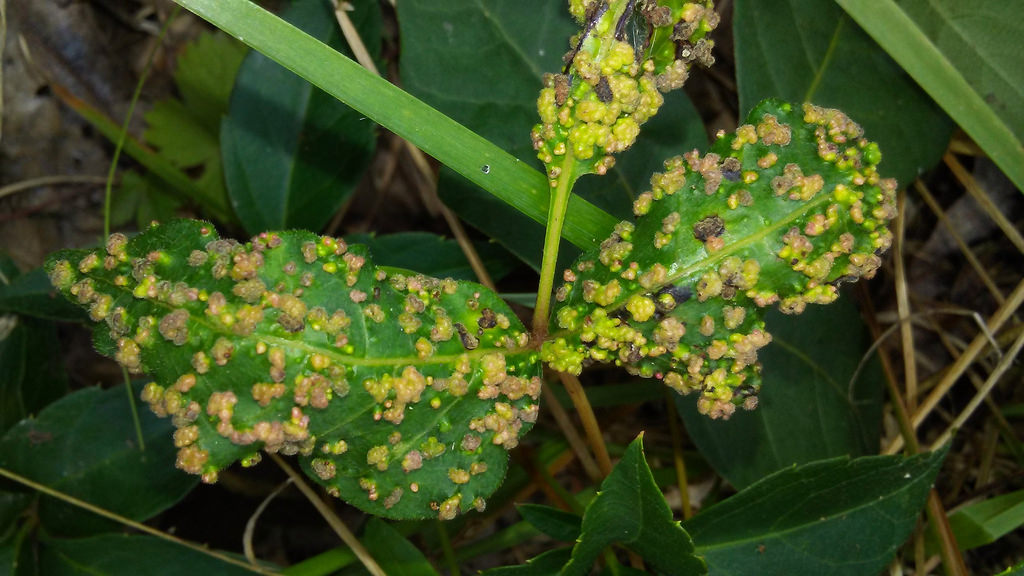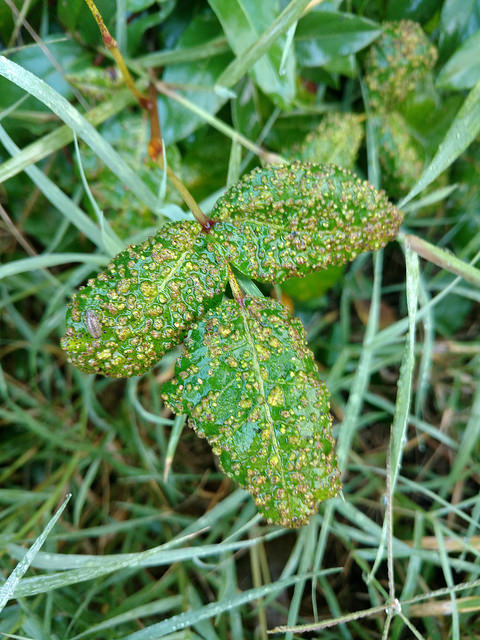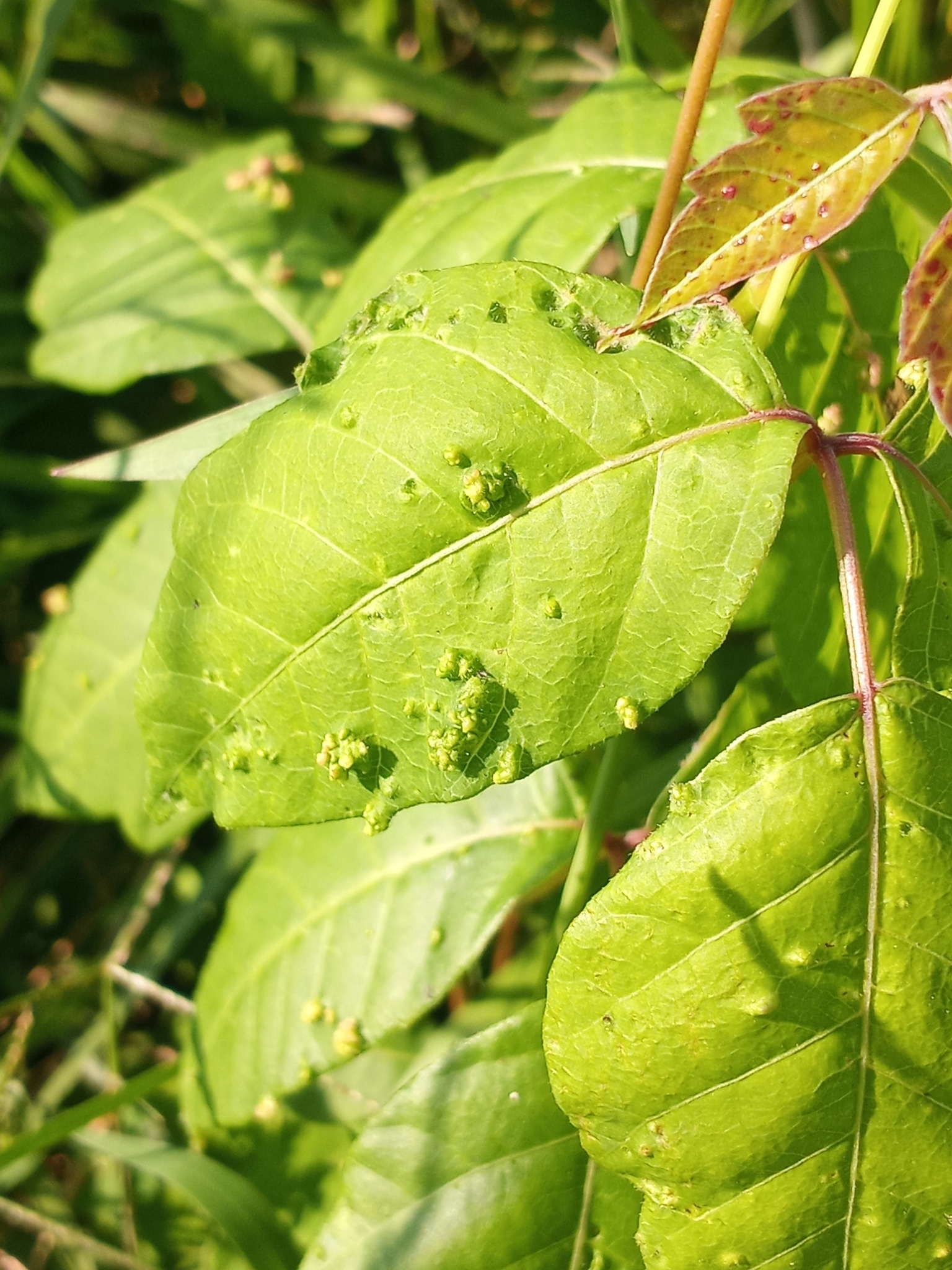Map Snapshot
























304 Records
Relationships
Host plants are Eastern Poison Ivy and Atlantic Poison Oak.
Seasonality Snapshot
Source: Wikipedia
| Aculops rhois | |
|---|---|

| |
| Aculops rhois galls on poison ivy | |
| Scientific classification | |
| Domain: | Eukaryota |
| Kingdom: | Animalia |
| Phylum: | Arthropoda |
| Subphylum: | Chelicerata |
| Class: | Arachnida |
| Family: | Eriophyidae |
| Genus: | Aculops |
| Species: | A. rhois
|
| Binomial name | |
| Aculops rhois (Stebbins, 1909)
| |
Aculops rhois, the poison ivy gall mite, is a species of Eriophyid mite found in North America. They form galls in poison ivy as well as other members of North American Toxicodendron and some species of Rhus (including fragrant sumac[1]).
Identification
[edit]Poison ivy gall mites form small red pouch galls on the upper surface of the leaves of their host. The mites themselves are extremely small and are usually found in the interior of the pouch (on the underside). The bright coloration they create in their host plant, however, makes this species fairly conspicuous and easy to detect compared to other members of Aculops (such as Aculops ailanthii in trees-of-heaven). Due to this, this species is one of the more widely reported species in its genus although like many of its relatives it is still poorly known.[citation needed]
References
[edit]














